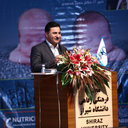Effect of sequential therapy on treatment of Helicobacter pylori infection in children.
Ключавыя словы
Рэферат
BACKGROUND
Helicobacter pylori infection which plays a major role in the etiology of chronic gastritis and duodenal ulcers in children and adults is one of the commonest chronic infection worldwide. Cure of the infection leads to healing of gastric inflammation and prevention of peptic ulcer.
OBJECTIVE
The aim of this study was to evaluate the efficacy of the sequential therapy for treatment of Helicobacter pylori infection.
METHODS
In this study, 40 children with symptoms of H. Pylori that the infection was proved by endoscopy and biopsy and rapid urease test (UBT) were enrolled, and received sequential therapy (Lansoprazol, Amoxicillin) for 5 days and (Lansoprazol, Metronidazole and Clarithromycin) for next 5 days. The eradication rate of therapy was evaluated by stool antigen test 6 weeks after completion of therapy. This study was carried out in Pediatric Gastroenterology Clinic of Shiraz University of Medical Sciences, Shiraz, Iran. This study was approved by ethic committee of Shiraz University of Medical Sciences.
RESULTS
Forty children with mean age of (10.8±4 years) were evaluated. The most common symptom on first admission was epigastric pain (82.5%), with mean duration of symptoms (16±14.5 month). The most common endoscopic findings was redness and erosion of the antrum (55%) and the most pathologic findings was chronic gastritis (77.5%). The most drug adverse effect was nausea (22.5%). The eradication rate of sequential therapy was 82.5%.
CONCLUSIONS
Eradication rate of sequential therapy was 82.5% among our cases.



